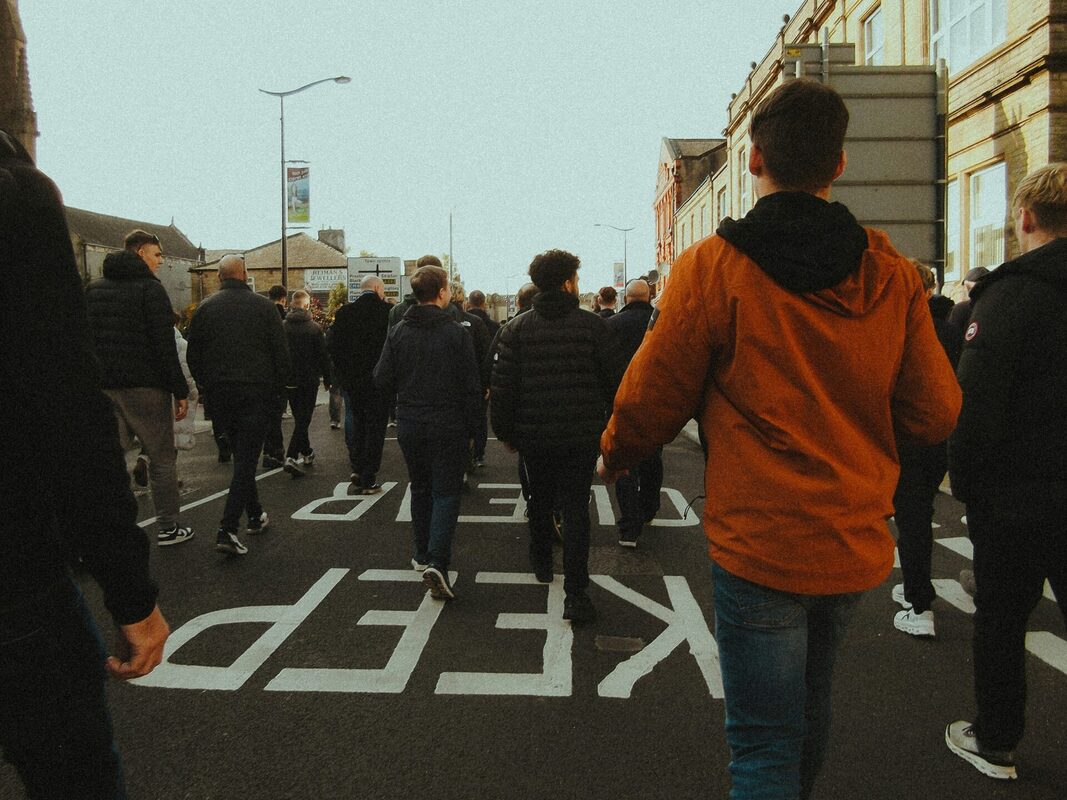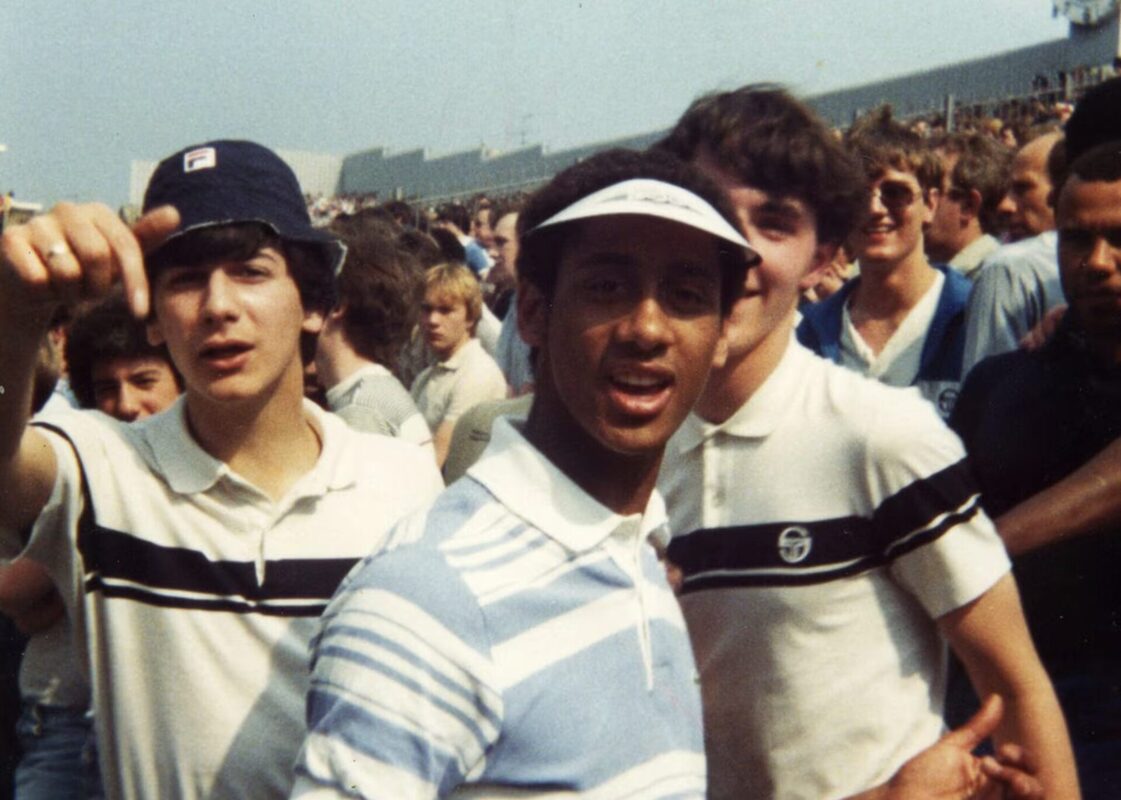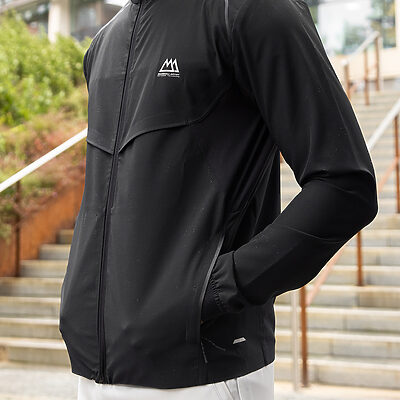MA// BLOG
BEYOND THE BADGE: WHY TERRACE STYLE STILL MATTERS IN A FAST-FASHION WORLD

There’s something reassuring about walking into a football ground and clocking the gear. Not just the home colours or the retro away shirt, but the real stuff: the jacket zipped to the chin, the understated cargo trousers, the trainers you can clock from across the concourse. The lad in the North Stand wearing a proper overshirt in mid-November. The group outside the chippy, all dressed differently but still somehow wearing the same uniform. That’s terrace style. Still alive, still evolving, still mattering, even in an age when the internet changes fashion trends quicker than a Premier League VAR can check a handball decision.

In the 1980s, this stuff started out on away days. A bunch of working-class lads heading to Europe, coming back with bits you couldn’t find in British shops: Sergio Tacchini tracksuits, Fila tennis tops, rare Adidas. It was style as souvenir. A way of dressing that said: “I’ve been somewhere you haven’t.” Over time, it became less about standing out and more about fitting in. Not in a sheepish way, but in a deliberate one. Club shirts came off. Labels mattered. The colours might change, but the silhouettes stayed the same. Smart coats. Clean lines. No fuss. A fashion culture built from the ground up, literally.
And that’s the thing: terrace style has always been more about instinct than instruction. It’s rarely dictated by the runways or the marketing plans. It’s passed down, passed around, adapted. What starts as a niche look in one corner of the ground can become gospel three months later.
And while it’s changed a lot in 40 years, the bones are the same. The clothes are still practical. Still good-looking without shouting about it. Still stitched into identity, the kind of stuff you can wear from the pub to the match without looking like you’re trying too hard.

Over the past decade or so, terrace fashion has loosened up. Literally. Gone are the days when jeans and polos were the de facto look. Since the pandemic, you see more fans turning up in joggers, technical layers, even full tracksuits. Comfort is in. But it hasn’t diluted the look; it’s just shifted it. Overshirts are everywhere. Cargo pants are back. Logos that once lived on Italian tennis courts now sit alongside the badges of outdoorsy brands like Arc’teryx, North Face, Salomon. The terrace has merged with the trail. Walking to a Premier League ground in winter? Expect to see fans dressed like they’re out for a stroll in the Peak District.
That blend of streetwear, outerwear,and old-school casualism has created something new, a kind of postmodern terrace look. There’s room for GORE-TEX. Room for vintage Adidas. Room for a bit of Carhartt or some boxy Scandinavian label. But whatever form it takes, the foundations are the same: function, detail, durability. Clothes made to be lived in, worn to death, talked about. Pieces that say something without shouting.

This is where Marshall Artist fits in. We’re not chasing the latest TikTok aesthetic or stitching slogans onto last year’s pattern. We build gear that lasts. Clothes that feel rooted in something real, something earned. A Marshall Artist overshirt isn’t just a layering piece, it’s a signal. A nod to the lad across the road. A raised eyebrow of approval. It says you know what you’re doing without needing to say it out loud.
Part of the enduring appeal of terrace fashion is exactly that: the understatement. While fast fashion feeds on novelty — weekly drops, endless scrolling, clothes that fall apart after two washes — terrace gear sticks to its guns. It’s about trust. About knowing that if you buy the jacket now, you’ll still be wearing it next season. Probably the one after that too. It moves at its own pace. A proper antidote to the dizzy speed of the high street.
And that steady pace breeds loyalty. You ask someone why they wear what they wear to the match, and they won’t talk about trends; they’ll talk about feel. About tradition. About mates. The best terrace pieces aren’t just bought, they’re inherited. They come with memories stitched into the lining. A last-minute winner at the Den. A freezing night in Stoke. A pub lock-in after an away day in Leeds. You don’t get that with a £15 sweatshirt from some influencer’s latest reel.

That’s why this style still matters. Because it’s not just about looking good, it’s about belonging. To a group. To a ground. To a way of doing things that refuses to rush, refuses to sell out, and refuses to fade. And even while younger fans are putting their own spin on it — mixing in new silhouettes, new labels, new references — the fundamentals stay the same. Keep it clean. Keep it sharp. Keep it real.
In the end, terrace fashion doesn’t need to shout to be heard. It moves quietly. Evolves gradually. And it lasts. That’s the point. That’s the reason a brand like Marshall Artist resonates in 2025: not because we follow the noise, but because we’re built to cut through it. In a world where your “For You” page is full of whatever’s next, sometimes it pays to wear something you know will still look good next month. Next year. Next decade.
Beyond the badge, beyond the colours, that’s what terrace style is: culture stitched into cloth. A living archive of who we are, where we’ve been, and what we still want to be. And for all the constant change, that will always matter.





